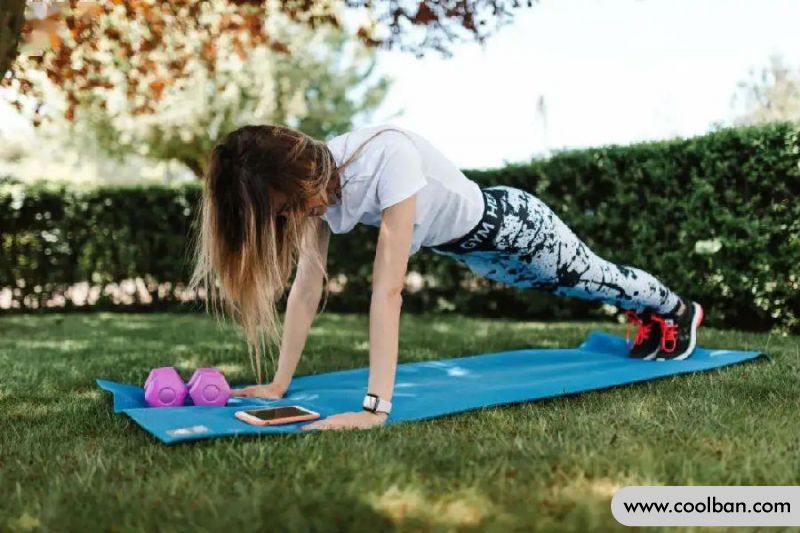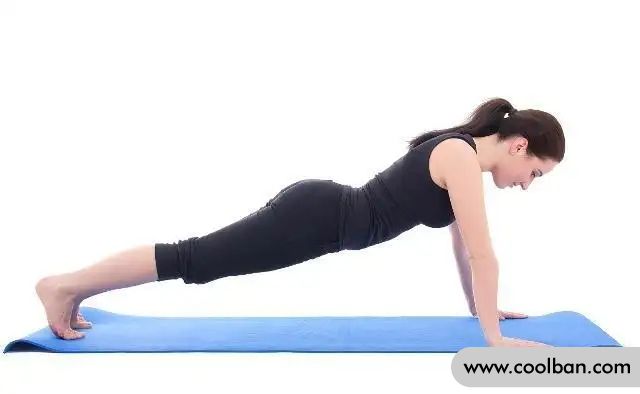Plank action skills
Consistently practicing planks can not only reduce fat and shape, increase metabolic rate, strengthen core muscles, but also improve balance and exercise ability. Any exercise must be scientific, not random, and plank training requires some skills to avoid unnecessary injury.
Plank action skills
1. Actions should be standardized in place
Keep hips, waist, and legs in a straight line, hips raised or lowered, upper arms and forearms not at a vertical angle, head tilted excessively back or forward, and body leaning. Improper movements will not only greatly reduce the quality of exercise, but also damage the lumbar spine over time. In addition, when doing side plank exercises, pay special attention to the balance of the muscles on both sides to avoid scoliosis.
2. Breathe evenly through your nose
There may be a transient increase in blood pressure due to increased abdominal pressure during planks. Therefore, do not hold your breath when exercising, breathe through your nose evenly, keep blood pressure stable, and reduce the occurrence of cardiovascular accidents.

3. The time should not be too long
Under normal circumstances, the standard plank support time should be controlled at about 2 minutes; for fancy plank support, such as side plank, plank leg lift, plank side knee lift, yoga ball aerobic plank, etc., each action can be done 3 sets of 30 seconds, Rest 10-20 seconds between sets. If the training time is too long, the movement will be more easily deformed and the injury to the cervical or lumbar spine will be heavier.
4. Step by step
Increase the intensity according to your physical condition and feeling, such as adding 10 seconds a day, stop when you are tired, and avoid excessive exercise that can cause delayed onset muscle soreness.
5. Moderate back bridge exercises
People who often do plank exercises should do back bridge exercises moderately to maintain the strength balance of the abdominal and back muscles and better maintain the stability of the waist and abdominal joints. It can also help prevent various types of lumbar spine injuries, such as low back muscle strain, disc herniation, and more.

6. Not for everyone
People with wrist ligament injury, tennis elbow, shoulder pain, frozen shoulder, etc. are not suitable for plank support. Forcing it can worsen existing symptoms. Additionally, people with lumbar disc herniation or lumbar muscle strain are advised to consult their doctor before considering planks.
Also, the plank is more difficult to complete for people who don't like to exercise or don't have a foundation in basic exercise. Therefore, people who are just beginning to practice can use the knee joint as a fulcrum to complete the action to shorten the length of the lever and reduce the difficulty of the exercise. As the ability continues to improve, gradually transition to standard movement exercises.

Those who are not suitable for plank support:
Planks look simple, but require a certain level of bone and muscle in the arms, wrists, shoulders, and waist. If you have recently had pain in your shoulders, waist, back, etc., it is best not to do this exercise. People with a history of wrist ligament injuries, tennis elbow, shoulder pain, frozen shoulder, and shoulder dislocation may exacerbate symptoms if they exercise reluctantly. Additionally, people with lumbar disc herniation or lumbar muscle strain should consult their doctor before considering trying exercises such as planks, crunches, and crunches that target the lower back and abdomen.

1. Patients with severe scoliosis, acute lumbar disc herniation, and osteoporosis are not recommended to do plank support due to unqualified skeletal muscles. However, planks are correct for mild scoliosis and can also be used as a restorative exercise in the later stages of a lumbar disc herniation.
2. Middle-aged and elderly people over the age of 45 are not recommended to do plank support, but people with good physical fitness who insist on long-term exercise can do it. Locke, in his 60s, is one example. Due to the stress on the blood vessels, this exercise is also not recommended for people with cardiovascular disease.
3. Due to the large amount of exercise on the waist and abdominal muscles, it is not recommended for pregnant women to use planks. However, it is recommended that women who are more than 42 days postpartum perform plank support, which is conducive to the recovery of pelvic floor muscles and prevents uterine prolapse.
